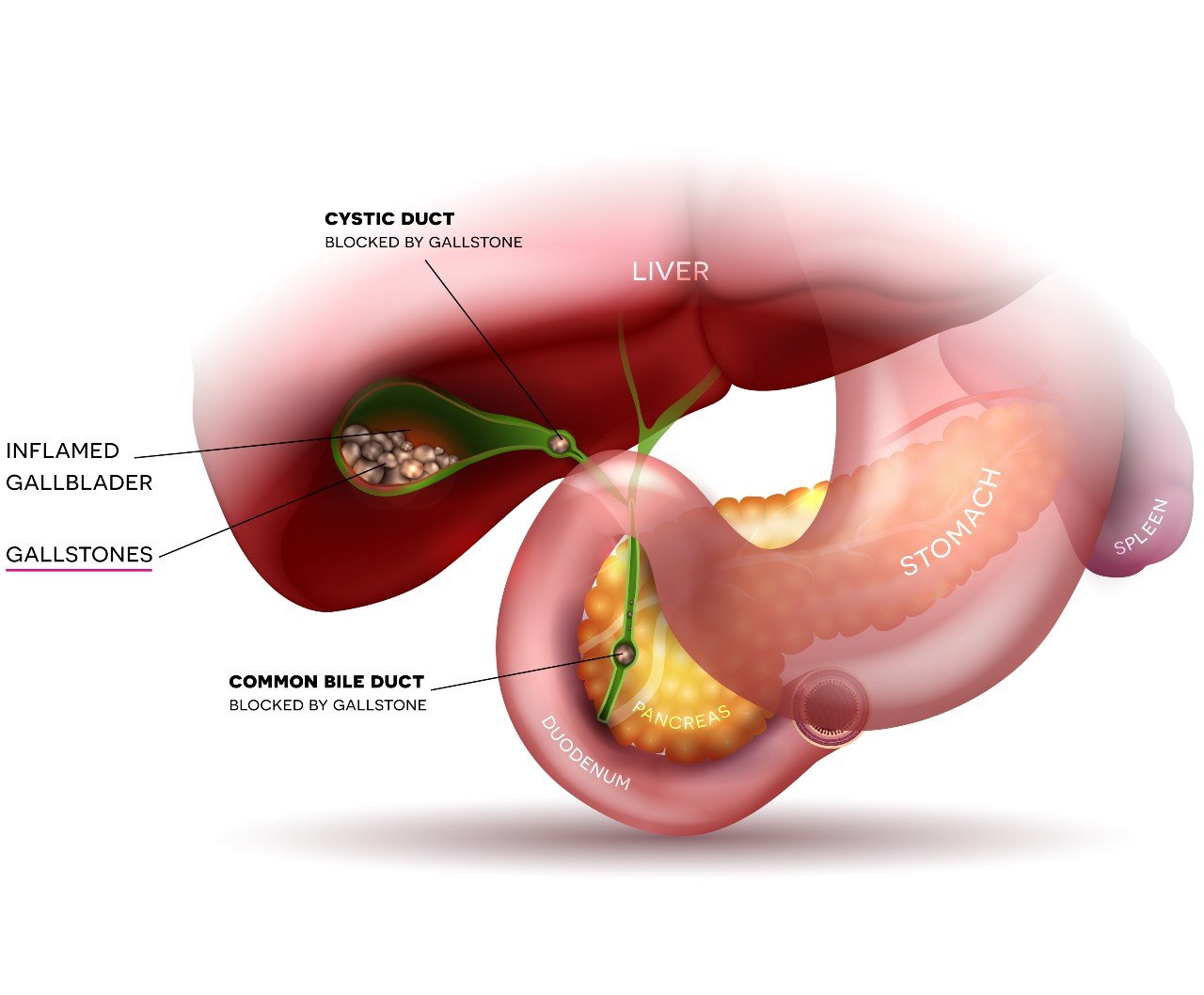
Gallbladder stones, commonly known as gallstones, are solid particles that develop inside the gallbladder. The gallbladder is a small pear-shaped organ located beneath the liver, responsible for storing bile — a digestive fluid that helps break down fats. When the balance of substances in bile, such as cholesterol, bile salts, or waste products, is disturbed, it can lead to the formation of stones. These stones may vary in size from as small as a grain of sand to as large as a golf ball.
Causes
Gallstones usually form when bile contains too much cholesterol, or when the gallbladder fails to empty properly. Risk factors include obesity, a high-fat diet, rapid weight loss, pregnancy, diabetes, and a family history of gallstones. Women over 40 years are more prone to developing this condition due to hormonal changes.
Symptoms
Not all gallstones cause problems. Some people may have "silent stones" without symptoms. However, when a stone blocks the bile duct, it can lead to severe abdominal pain (especially in the upper right side), nausea, vomiting, bloating, indigestion, and even jaundice in some cases. The pain, known as biliary colic, may last from a few minutes to several hours.
Treatment
Treatment depends on the severity of symptoms. Small, asymptomatic stones may not need any intervention. However, recurrent pain or complications often require medical treatment. Options include medication to dissolve stones, lifestyle modifications like a low-fat diet, and in severe cases, surgical removal of the gallbladder (cholecystectomy). Homeopathy and alternative medicine can also provide relief by addressing the root causes naturally.
In conclusion, gallbladder stones are a common but manageable condition. Early diagnosis, lifestyle changes, and timely treatment can help prevent complications and improve quality of life.
⬅ Back to Blogs